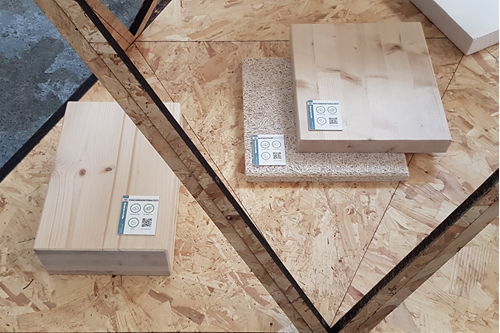- Gæsteblogger
- 25. august 2020
Build in Wood 2020 – Day 1
This post has been written by Henriikka Taipale, an MSc student of Energy-efficient and Environmental Building Design at Lund University. She also writes about wood on newnordictimber.com.
Build in Wood 2020 – Day 1
This year, 250 timber nerds have come together at Docken to attend the third consecutive Build in Wood conference, taking place on 25th and 26th August. For the first time, over 200 online participants from around the world also joined in on Build in Wood’s digital edition.

“How can cities support timber construction?”, asked Camilla van Deurs, the City Architect of Copenhagen. Apart from encouraging building with wood in local plans and granting experimental building permits, a close dialogue with developers, architects and consultants were mentioned as the key drivers from the municipality’s perspective. It was also announced that the construction of up to 42-meter tall wood buildings has just been made permissible, which marks an important milestone on the path towards more wood construction in Denmark.
JAJA Architects introduced their timber parking house and mobility hub project in Aarhus and discussed the technical obstacles faced underway. For the wooden structures, exposure to moisture has been one of the challenges. However, innovative solutions have been borrowed from bridge construction, for instance, to allow the tactile timber surfaces to remain visible to the building users.
We heard a compelling presentation from Aalborg University’s Harpa Birgisdottir on the topic of life-cycle assessment, and how exactly building with wood can reduce the environmental impact of our new buildings. By replacing carbon-heavy materials with biobased ones, there is enormous potential in reducing the global greenhouse gas emissions, of which 40% is generated by the built environment.
Architect Andrew Waugh, a pioneer of CLT construction in the UK, reminded us of the benefits of prefabrication with wood construction, resulting in direct savings in terms of transportation, construction time and manning, as well as reduced demands on the foundations. He also introduced a fascinating masterplan for a carbon-neutral timber village in Bergen, Norway, where 1,500 new homes will be built on an artificial island complete with solar corridors, seawater heat pumps and underwater oyster farms.
To wrap up the first conference day, wood’s potential in improving human wellbeing and happiness was discussed. Whether in the context of an architectural space or a forest, the presence of wood offers a pleasant sensory experience with its aesthetic qualities, warmth and fragrance. It is certainly challenging to say the same about any other construction material today.
Stay tuned for another guest post summing up the second conference day.

